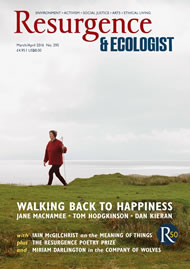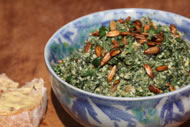When we talk about our ‘roots’ as humans we think about the cultural preferences that have nurtured many generations of our family and community over many decades or centuries. Our roots have their origins somewhere deep in the past when successful ways of doing and being were seeded. These have become traditions – reliable pillars of routine, points of advocacy, cornerstones in the building of social and personal stability. They are cornerstones that may have a manifest expression as well as a conceptual one.
Perhaps we picture in our mind’s eye these human roots of ours being rather like the roots of a tree, spreading out at our base, moving ever deeper into the soil of life and literally holding us securely in place so we don’t topple over as we grow to potential ‘above ground’. The roots of a tree grow downwards below the soil, as the tree above the soil grows upwards, and at the same time the roots provide the vehicle for soil nutrients to move upwards into the tree. Likewise the leaves and branches of the tree, while growing upwards, provide the vehicle for the energy of sunlight to move downwards into the tree, through the process of photosynthesis that happens in the leaves. Human growth has this upward thrust as well, but what we don’t see is our psychological roots growing downwards and anchoring us as we mature in our sense of who we are, what we believe in and what our contribution to life’s process is.
Of course, not all plants are giants that stand firm through the changing seasons as do trees. Many shrubs grow anew from their roots each year. Many people spurn their roots as if they were trappings, and later return to them, seeing that they offer the potential for both stability and variation and can be ‘danced’ with, creating a hybrid variation that combines creativity and the stability that comes with connecting with our origins.
When it comes to kinds of roots, the physical roots of the tree allow less flexibility than the more conceptual roots of the mobile being. Physical roots give a firmer anchoring to place; the chance of losing touch with roots and place is less. This also means there may be less scope for innovation, which has been one of the great domains of the creative human. As always, there are pros and cons attached to both ways of being: limitations are restrictive and formative at the same time, while freedom is a source of potential danger and potential innovation at the same time.
On a grand scale, it is the tilted axis that the Earth spins around that gives rise to the seasons, rather than its elliptical path of orbit around the sun. Because of this 23.5° tilt, different parts of the planet point towards or away from the sun at different times of the year as it moves around it. At a local level on the Earth this is experienced in the varying distribution of sunlight and therefore the variation in warmth, day length and growing patterns that characterises the seasons of the year. When the Earth is at its furthest from the sun, with the northern pole of its axis tilted away, the winter months are experienced in the northern hemisphere. At the other extreme of the elliptical orbit and with the Earth’s northern axis tilted towards the sun, the warmest season will be experienced in this same part of the world. Spring’s moment is summoned into being with a modest flourish halfway between these two solstice points of the Earth’s orbit, and from an astronomical perspective it begins with the vernal equinox at the beginning of March, when day and night are equal.
The spring season in the northern hemisphere is typically associated with new growth and renewal. It is a time when the soil begins to warm after the cold of winter, seeds send down roots, and shoots push their way to the surface in search of the light. These first shoots of the growing year are rich in antioxidants, which are exactly what we need to revitalise our bodies. In old open woodland we’ll find ramsons (wild garlic) beginning to cloak the ground with its lush green tapering leaves and white pompom-like flowers. Neighbouring these, and in hedgerows and gardens that have been allowed to roam wild, we’ll find the first shoots of nettle, ready to be harvested after one moon cycle and before they flower. These too offer a unique nutritional bonanza, and though they can continue to be harvested for several months by cutting back the tips to prevent flowering, the first small tender leaves of the spring give us the most epicurean of nettle-eating experiences. This is also the time before they will be needed as a protective hiding place for new generations of butterflies and other insects.
The egg is another form of food that is associated with rebirth. Indeed, it has become the archetypal emblem for Easter. In our modern world, where most eggs are gathered from a supermarket rather from under the feathery belly of a hen, we can often forget that eggs naturally have a seasonal aspect to their availability. I confess that I didn’t fully realise this myself until purchasing large quantities of local free-range eggs for Schumacher College. Now I know better what makes perfect sense – that chickens will typically stop laying for several weeks in the winter when it’s cold. This is a time outside the natural breeding season of a bird, so again it makes perfect sense. When the chickens start laying again in the spring, their eggs herald the reawakening of the regenerative process in the animal world, just as the green shoots bursting through the soil and the buds bursting into leaf and flower on trees herald the revival of the plant kingdom.
To celebrate this revival I’m sharing a seasonal recipe for…
Nettle & Sunflower Seed Spread
This pâté ripples with the goodness of spring energy, capturing the vital nutrients of nettles and wild garlic as they first emerge from the hedgerows, reaching for the sun. Later in the year, the spread can be made with leafy, non-flowering nettle tips and other intense forest garden leaves that also go into salads, such as nasturtium, sorrel, marshmallow, boiled dandelion, cleavers, young beech and garlic mustard.
Serves 6–8
100–150g young nettle leaves/tips and other edible wild leaves (if desired)
10–15 leaves of wild garlic (ransoms) , or 1 clove of garlic if no wild is available
½ onion
3 tbsp olive oil
50g sunflower seeds
tamari
2 hard-boiled eggs (or 100g tofu for vegans)
2–3 tsp lemon juice
salt and pepper
Method
1. Protecting your hands with rubber gloves, remove the stalks from the nettles. Rinse the leaves, any other edible wild leaves you may be using and the wild garlic leaves in cold water and leave them to drain in a colander.
2. Peel and chop the onion and begin sautéing it in olive oil in a large, deep-sided frying pan (or a saucepan). Crush and add a garlic clove if wild garlic is not available. Once the onion begins to turn translucent, stir in the nettle and other leaves. Continue cooking until the leaves are soft and look a little like cooked spinach. This will only take about 5 minutes – you don’t want to over-cook them, or the nutrient content will be diminished and the colour less appealing. When they are ready, turn off the burner.
3. While the leaves are cooking, spread the sunflower seeds out on a baking tray. Roast them in the oven for 8–10 minutes at 200 °C. Pull them out when they are beginning to turn light brown and sprinkle them with tamari. Stir with a wooden spatula, and then return them to the oven for a few minutes to ‘steam-dry’. Once the surplus moisture from the tamari has evaporated, remove the seeds from the oven, stir them and leave them to cool.
4. Roughly chop the hard-boiled eggs (or crumble the tofu) and mix with the cooked onion and leaves. Transfer some of this mixture to your food processor and blend it until smooth. Add half the roasted sunflower seeds to the spread at this stage, whole or blended in. Save the rest for the top. Add lemon juice, salt, pepper and more oil as you go for good flavour.
5. Scoop the finished pâté into a bowl and toss the remaining tamari-roasted sunflower seeds over the top. This vital nettle spread goes deliciously with bread and crackers, and it is not too rich to be eaten on its own or with brown rice.








